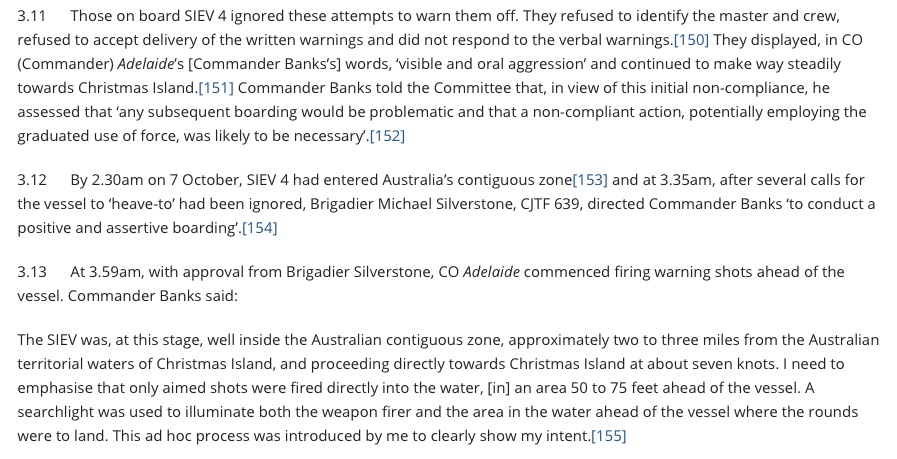
For those wondering at why the Australian government would abandon its Afghan “allies” and comrades of ADF soldiers to an uncertain fate after the Taliban have taken over #Afghanistan, a little history lesson in how Australia has historically treated Afghan refugees 

In August 2001 the MV Tampa rescued 433 refugees at sea. 244 of them were Afghans, fleeing the Taliban, and following the laws of the sea Tampa attempted to land them in Australia. The Australian government refused to take them.
The Tampa’s captain refused to turn around so Australia sent in the SAS. The commander of the SAS force that raided that ship, Vance Khan, was ultimately in charge of a squad that killed tribesmen as part of Operation Slipper in Afghanistan. tinyurl.com/4y68z58z
Operation Slipper, Australia’s special operations activities in Afghanistan, is the subject of the Brereton report because 19 members have been implicated in the murder of 39 Afghan civilians and various other war crimes. 

In October 2001, another boat carrying asylum seekers entered Australian waters. Nobody seems to have bothered reporting who these asylum seekers were, or we don’t know, because the navy was sent to drive them out of Australian waters. 

As part of that operation the navy fired into the water in front of the ship. The prime minister John Howard claimed the asylum seekers had thrown their children into the sea. This was a lie, intended to slander refugees during an election that Howard wasn’t sure he would win. 

And who managed the 2001 election campaign which slandered refugees from the Taliban with the “children overboard” lie and put anti-refugee rhetoric at its centre? Scott Morrison, the current prime minister of Australia who is being faulted for failing to save Afghan workers. 

After the “Children overboard” incident, the government hired a dodgy company that claimed to be able to identify the “true” origins of asylum seekers from their accent and speech. This company redefined Afghan refugees as Pakistani tribesfolk so their claims could be rejected.
Between 2001 and now, except for a brief period under Labour, the Australian government has incarcerated all refugees coming by boat in concentration camps on Nauru and Manus Island. A total of 786 Afghan refugees fleeing the Taliban were imprisoned on Nauru in 2001-2002.
Since 2012 about 4000 people have been incarcerated on Pacific islands. Of the 217 people still incarcerated, 165 (72%) have been there over a year, and 3 have been there more than 4 years. They will never be resettled in Australia.
tinyurl.com/4rkhn5nm
tinyurl.com/4rkhn5nm
Only 29 of the original 244 Afghan refugees on the Tampa were ever resettled in Australia. New Zealand took 208 of them. 

Managing the offshore processing camps costs about 800 million dollars per year, because Australia would rather burn money than allow a single Afghan refugee to land. 

Australia’s “Pacific solution” dumps vulnerable and desperate people in cruel concentration camps far from Australia, and abandons them there with no hope of a future. The residents of these camps have constantly protested but the government just increases the cruelty. 

And don’t doubt that almost every senior journalist or defence policy think tank worker who is crying over the abandonment of Afghan workers in Kabul today, was either defending or ignoring this policy over the past 20 years.
It’s no surprise that these Afghans have been abandoned, and any senior media or policy commentator in Australia who tells you they are surprised and disappointed is either a fool or a liar. 



• • •
Missing some Tweet in this thread? You can try to
force a refresh













